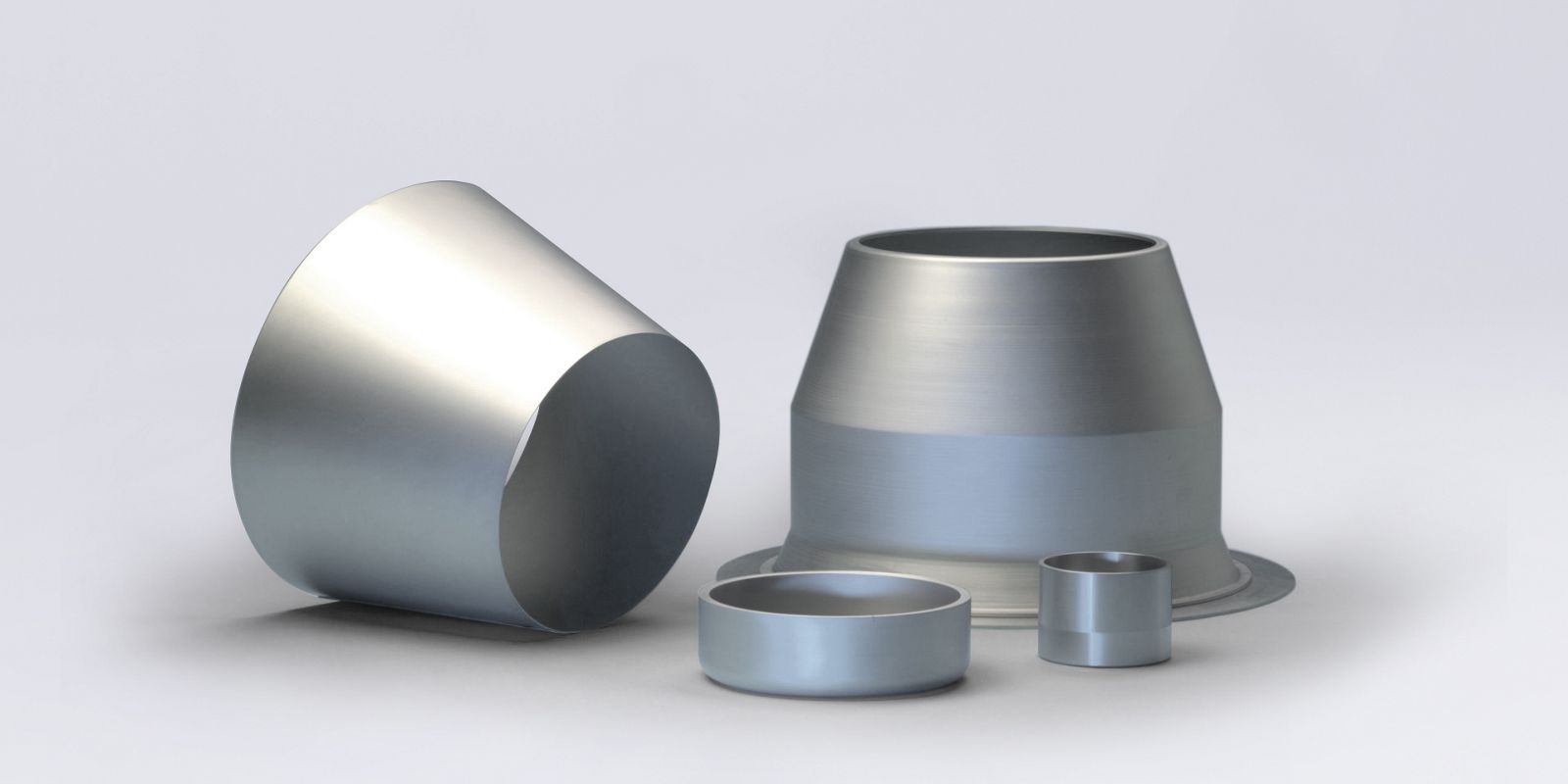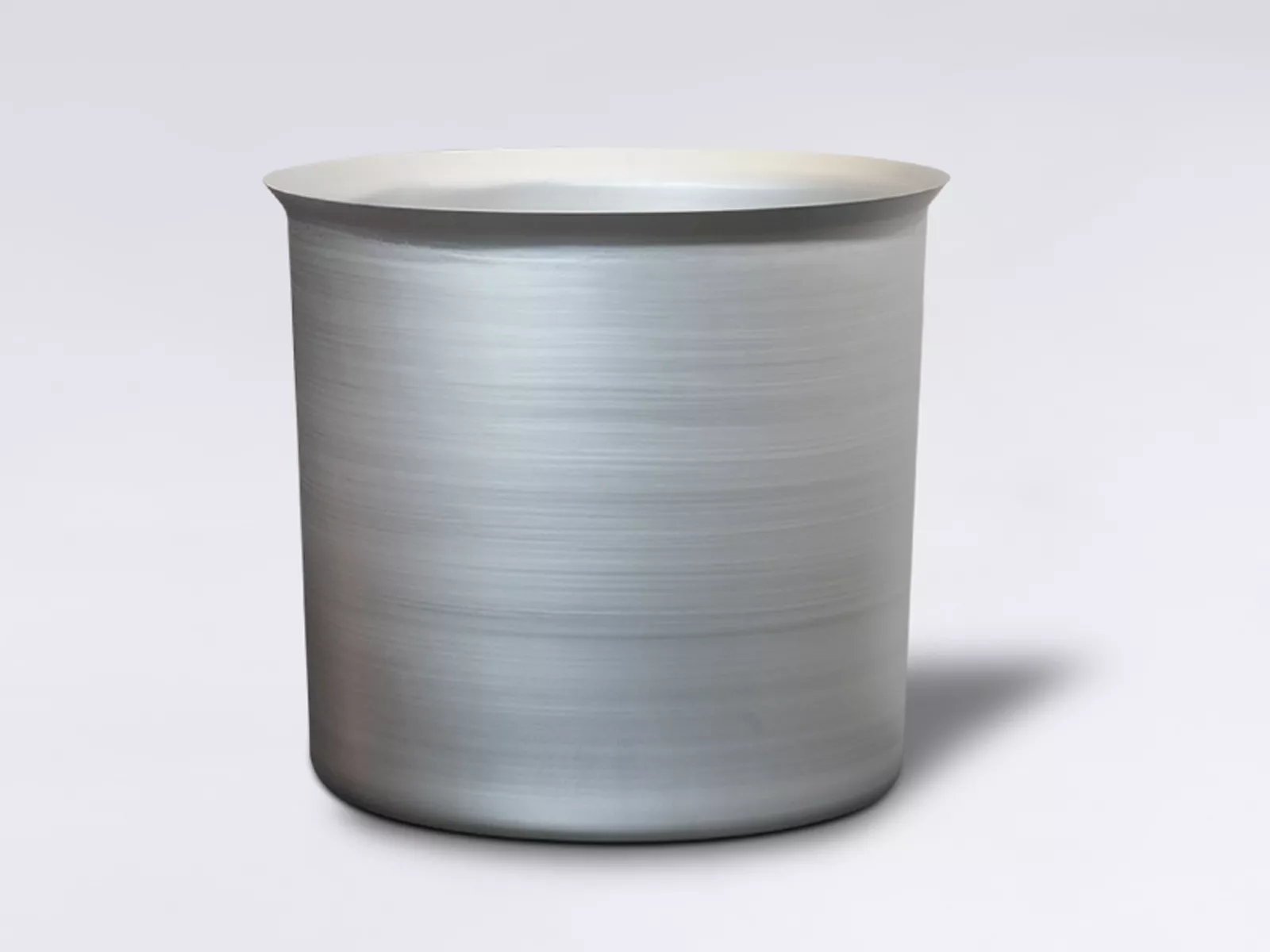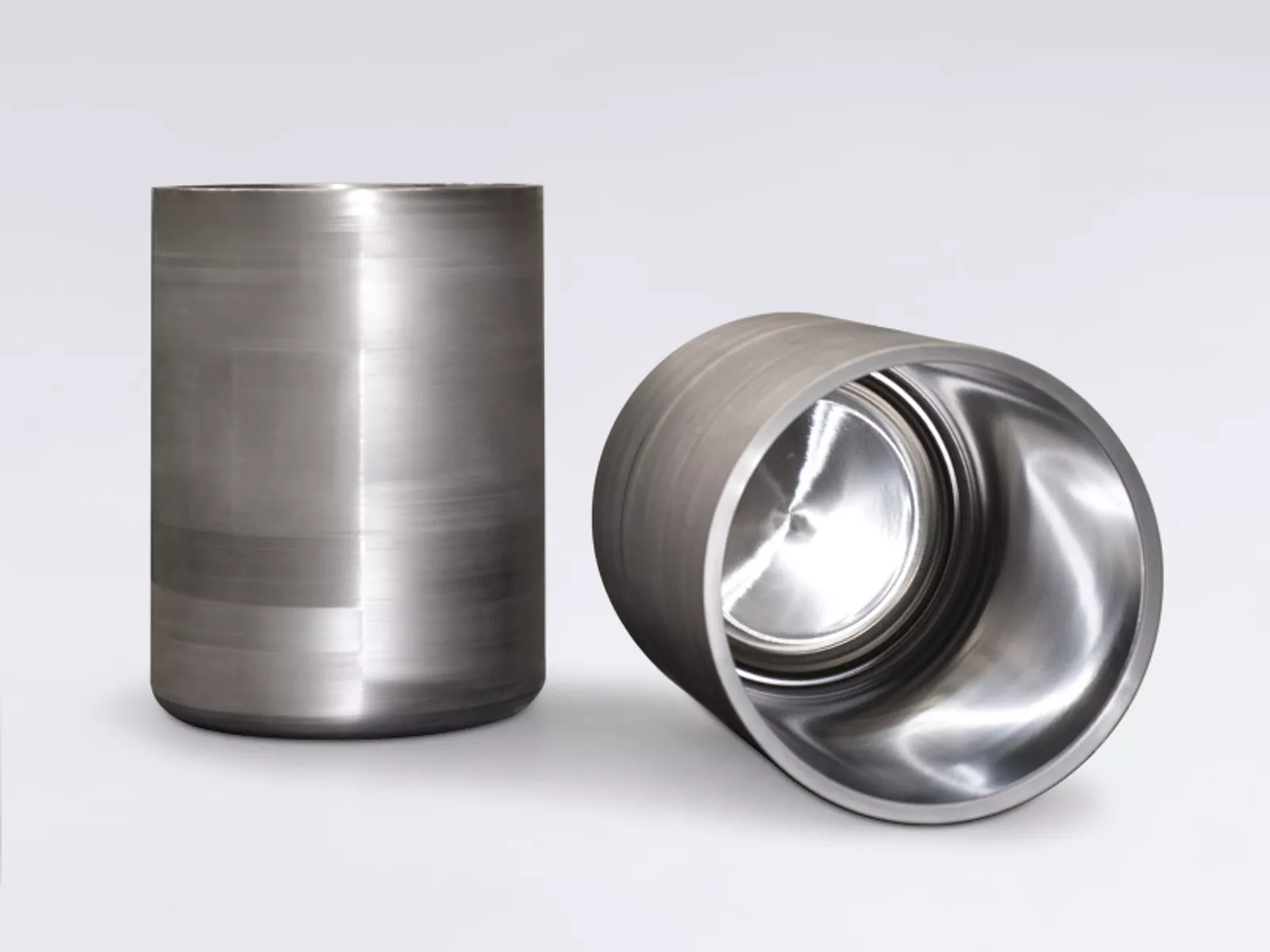
Formed and press-sintered crucibles
The production of substrates for LED technology, watch cases, and glass requires sapphire. The material is manufactured by means of various single crystal growing processes. During the sapphire production process, the sapphire crystal Al2O3 is melted in crucibles made of molybdenum or tungsten. They are used as vessels for melting and solidifying the single crystal. Our crucibles are also used for melting or evaporating various other high-temperature materials.
Your advantages at a glance:
High material purity
No contamination
Optimized wall thickness to strength
ratioHigh corrosion
resistanceHigh surface quality

Formed crucibles made of molybdenum and tungsten really prove their strength in the HEM (Heat Exchanger Method) process. They are the perfect vessels for melting and solidifying the single crystal. Our formed crucibles made of molybdenum and tungsten have particularly thin walls and a high creep resistance. The excellent purity of our material prevents the single crystal from becoming contaminated. As a result, our material can also withstand highly aggressive sapphire melts.
Pressed-sintered crucibles

Our pressed-sintered crucibles are particularly robust during the Kyropoulos process. During this process, they are repeatedly heated to over 2,000°C and then cooled back down.
If the surface of the crucible is too rough, the sapphire is not released properly from the crucible wall, resulting in cracks and faults in the crystal. The crucible is also severely damaged and has to be reworked or prematurely replaced.
Our pressed-sintered crucibles made of tungsten have a very low roughness of under 0.8 µm. The sapphire can be easily removed from the crucible and does not damage the crucible surface. This means less reworking of the crucible surface for sapphire manufacturers, which can be time-consuming. The cycles run smoothly and produce high-quality ingots. The smooth surface is also less susceptible to corrosion caused by the aggressive sapphire melt. As a result, the reusable tungsten crucibles are more durable. Our molybdenum crucibles are also available with an ultra-smooth surface.
Consistent wall and base thicknesses
With our decades of experience in powder metallurgy, we produce crucibles with a particularly high density and purity. By filling the crucible mold correctly and ensuring exactly the right temperature distribution during sintering, we are able to achieve consistent wall and base thicknesses. This consistency is an important prerequisite for the high creep resistance of our crucibles.
Our crucibles are being used to great success by all major manufacturers and numerous end customers throughout the world.
We manufacture the source material for our crucibles in our own hot-rolling mill for refractory metals. Here we produce the world's largest molybdenum and tungsten sheets, which will enable us to produce very large formats in future.
The right dimensions for your application
We produce formed molybdenum and tungsten crucibles in large quantities and all common formats. From laboratory sizes with a diameter of 10 mm and a height of 5 mm through to industrial large-scale applications with diameters of up to 600 mm and a height of 800 mm. We can even provide larger diameters, albeit with a lower side wall height.
We provide our pressed-sintered crucibles with a diameter of up to 1,000 mm and a height of up to 900 mm.
Further products for high-temperature processes
Whether for annealing furnaces and soldering processes, coating systems, 3D printing sintering equipment, MIM furnaces, sintering furnaces, HIP processes or single crystal growing – our products made of molybdenum, tungsten, tantalum, and niobium can withstand the highest temperatures:
Is your product not yet included? Get in touch and we'll be happy to develop a tailor-made solution for your specific application.

